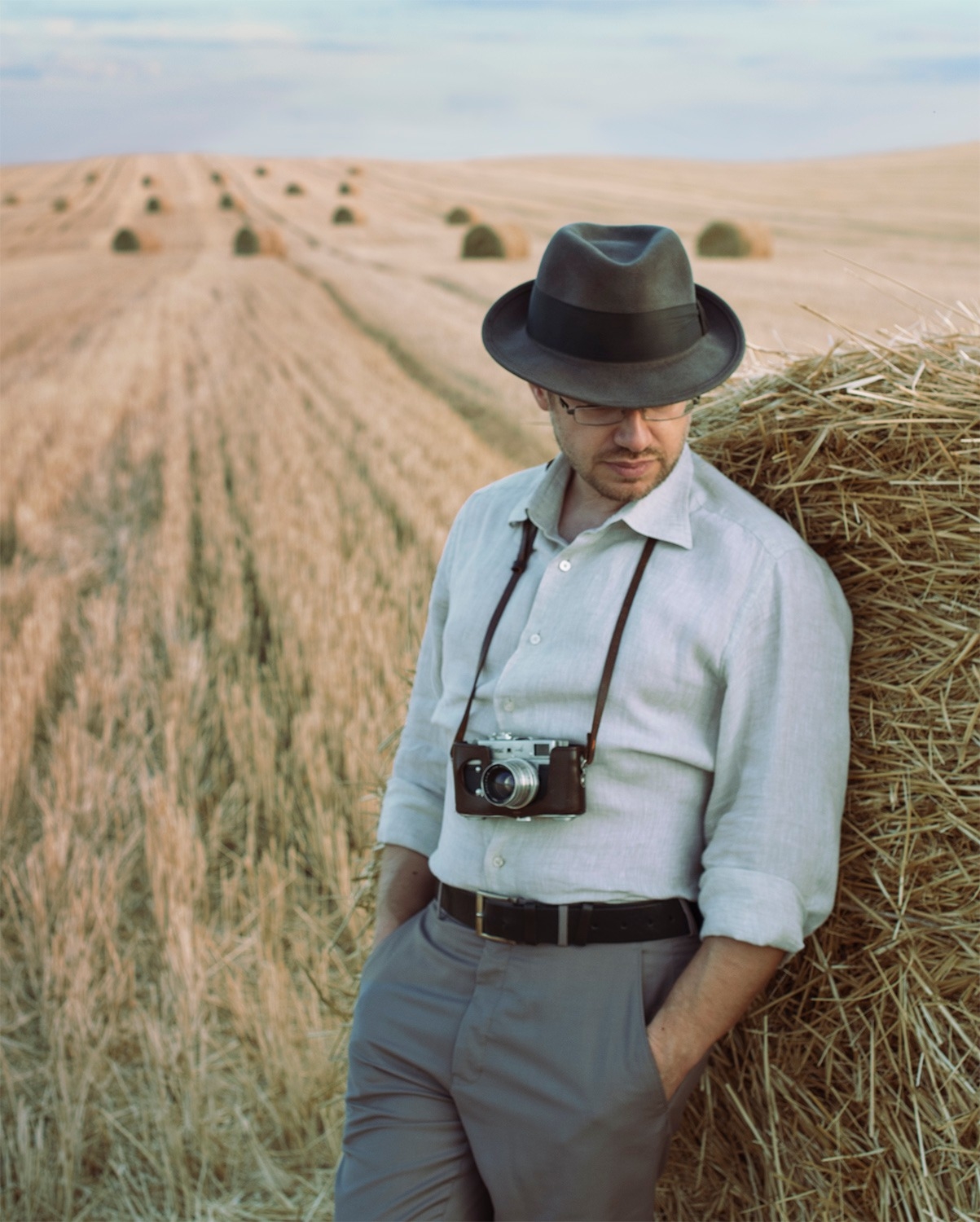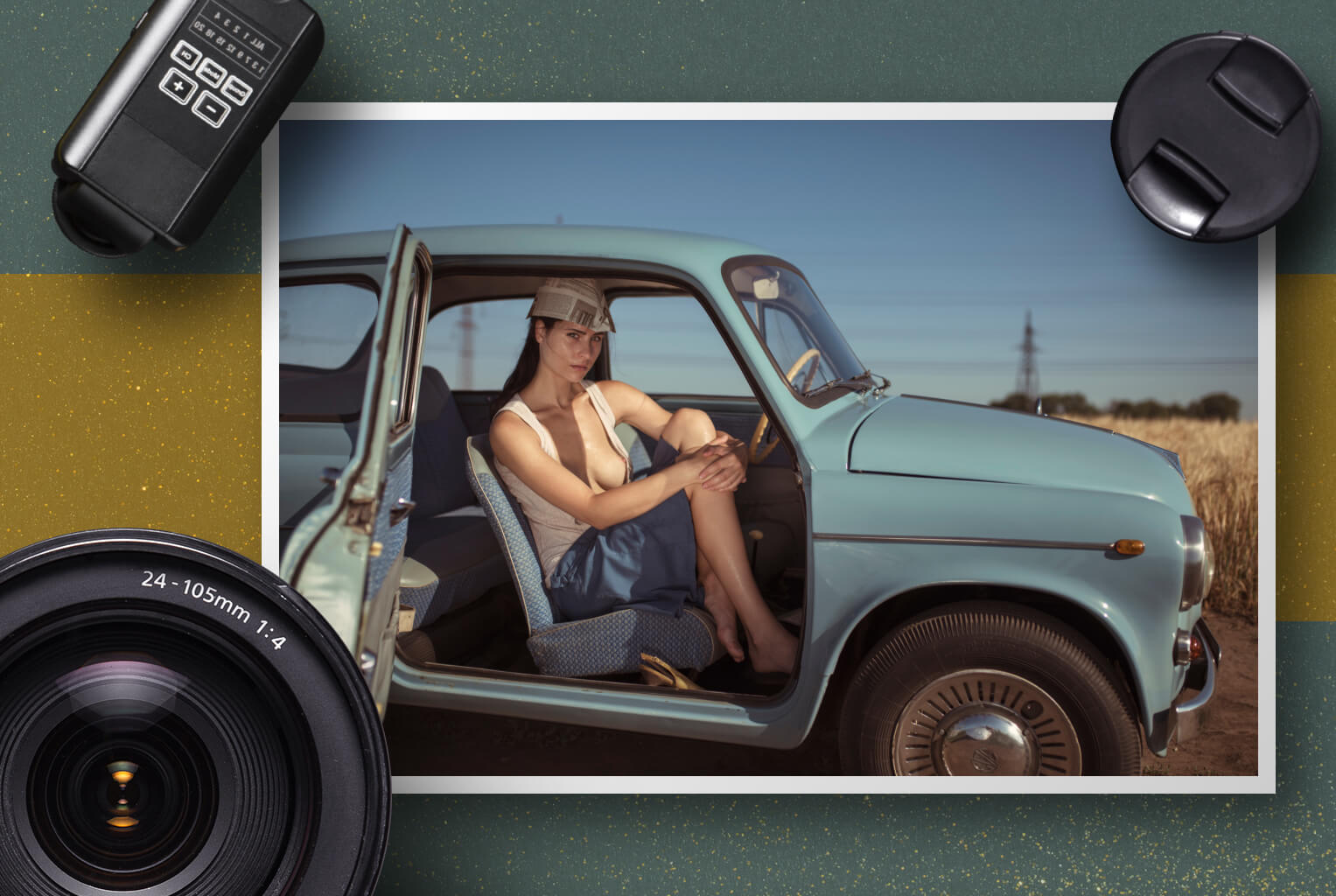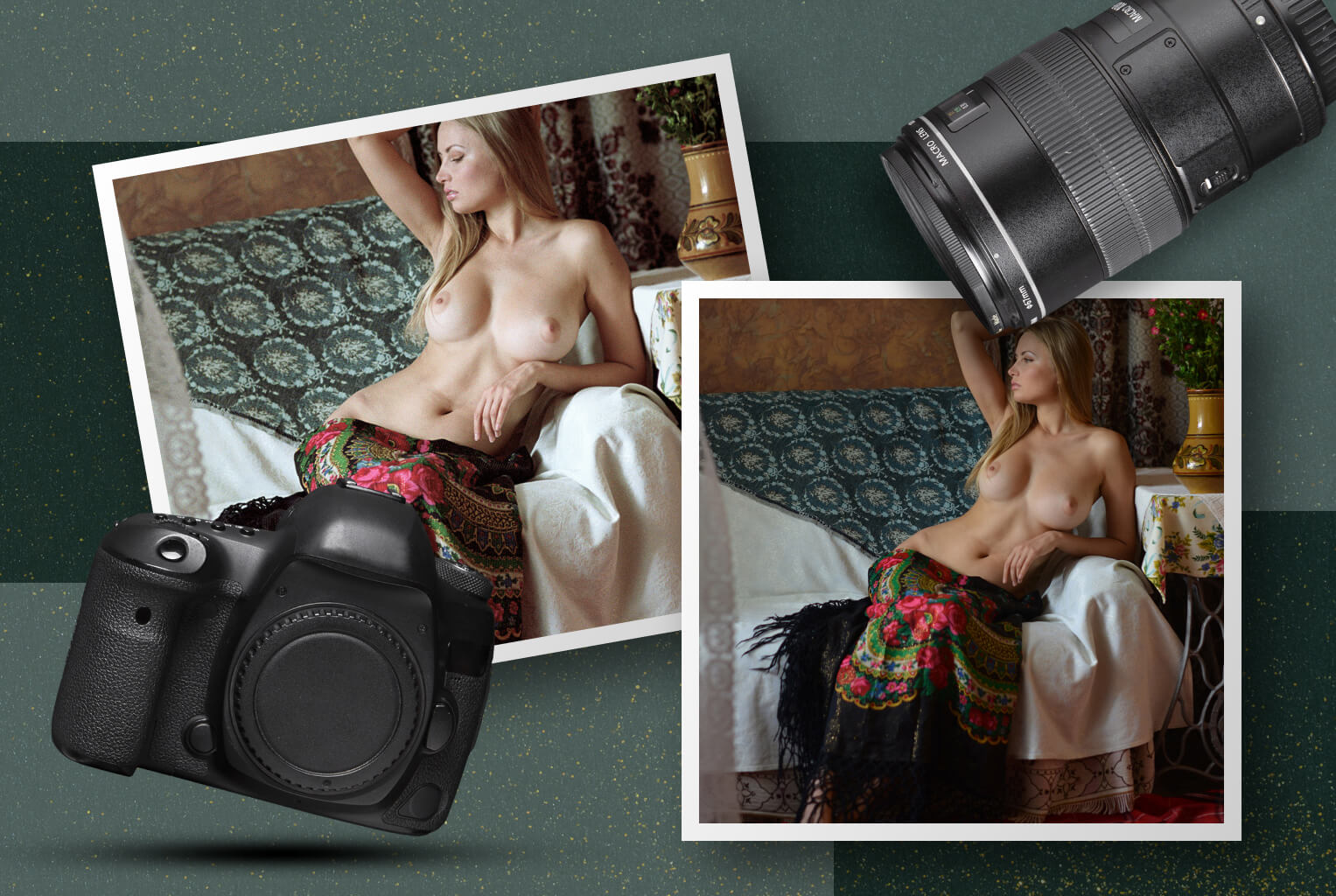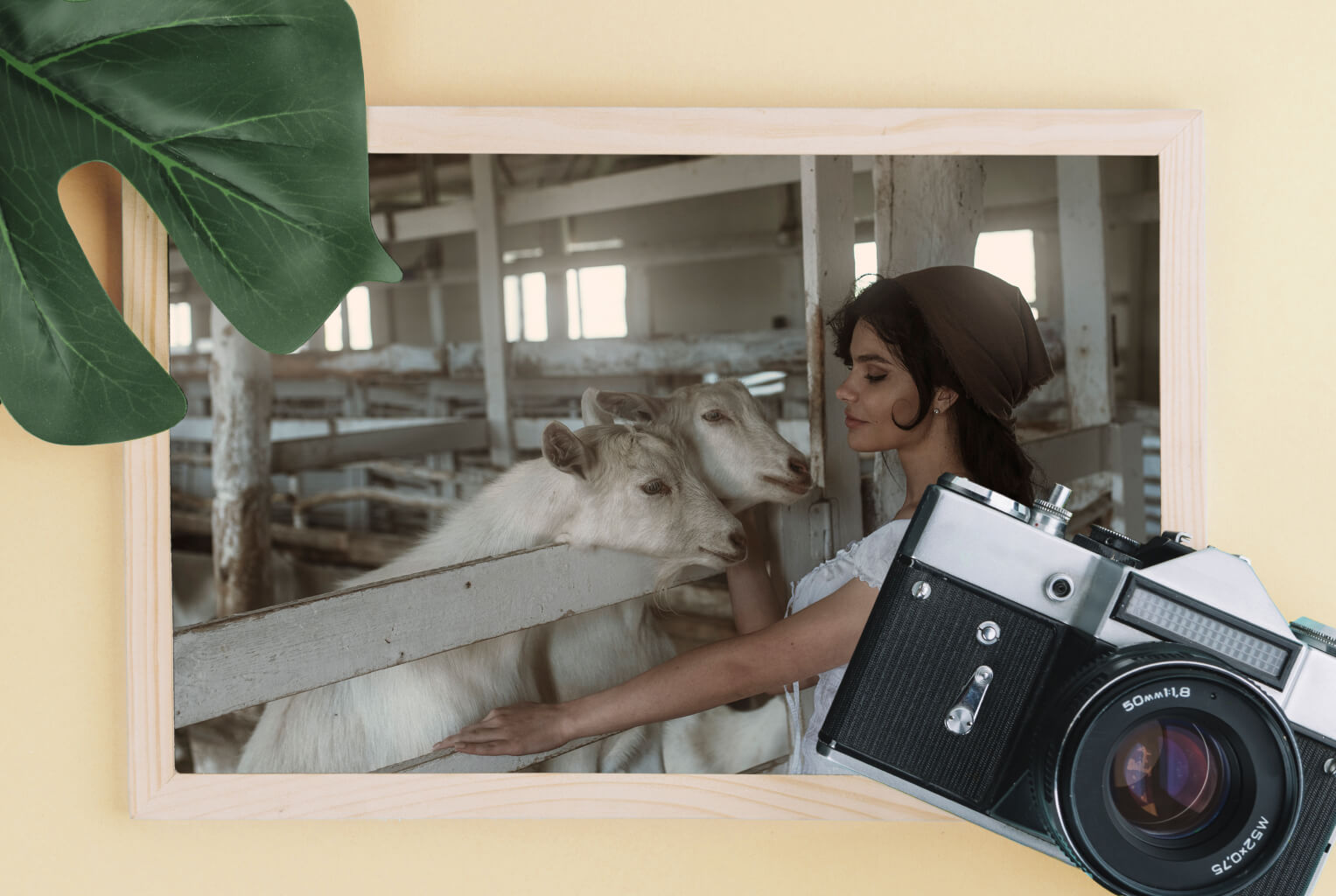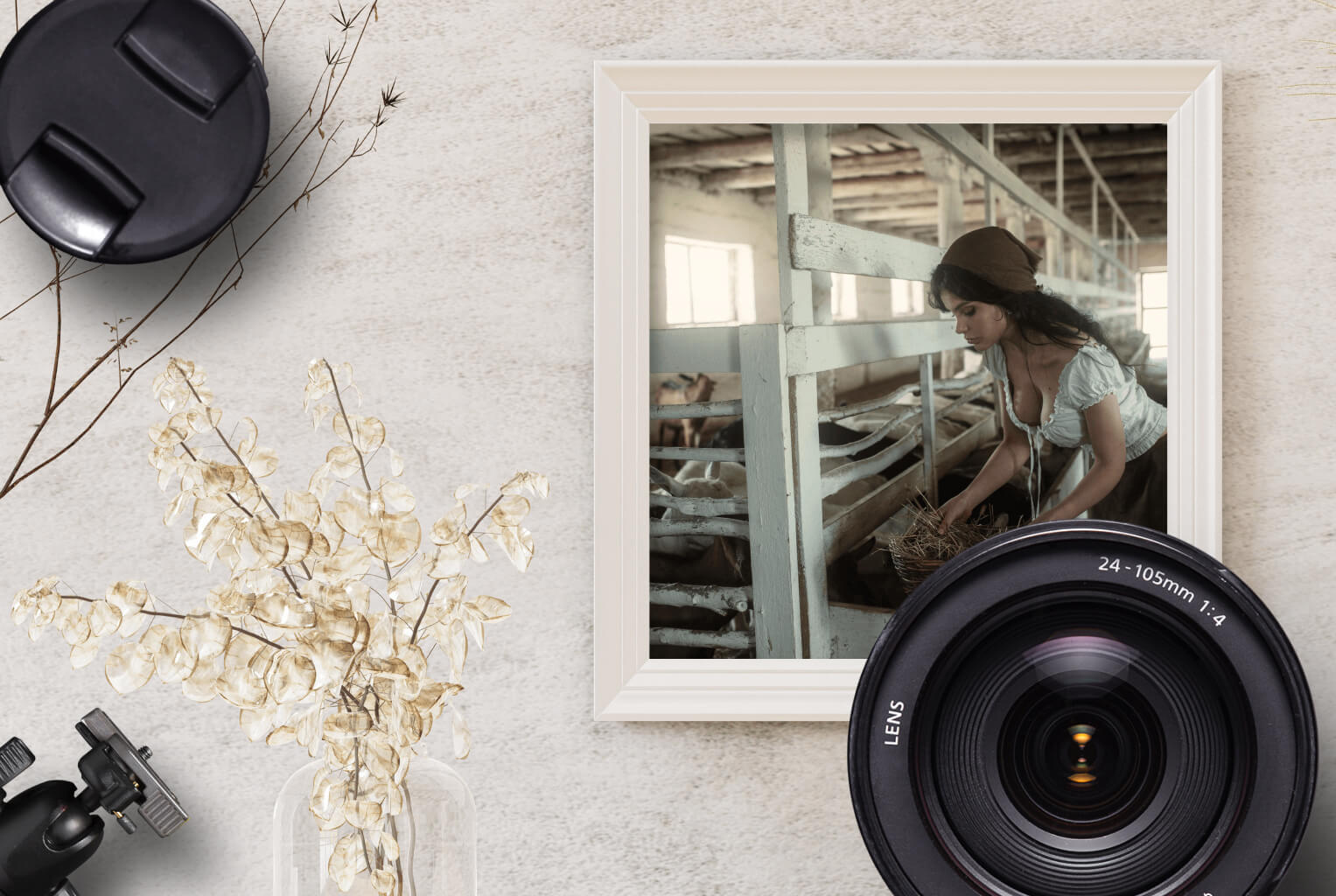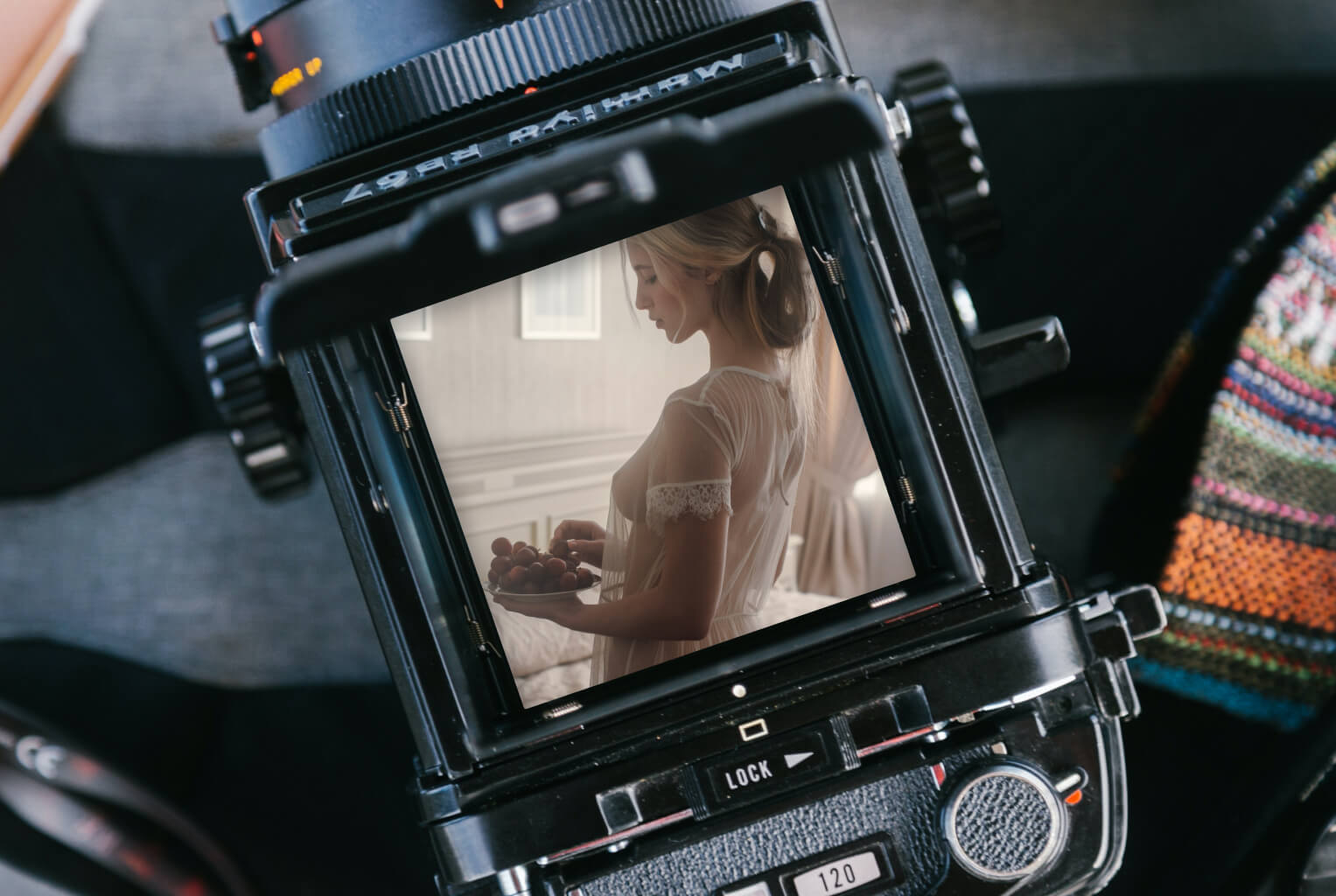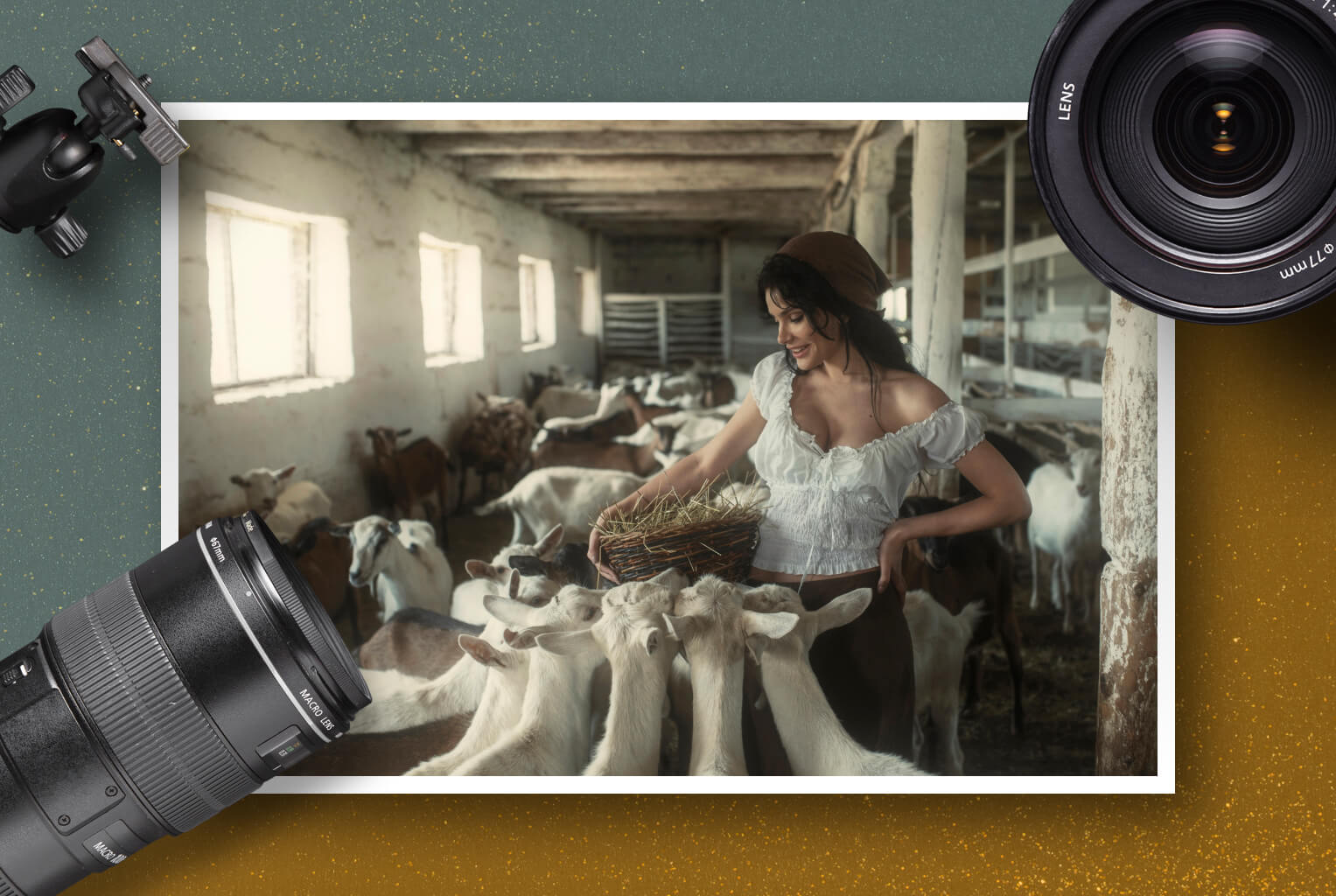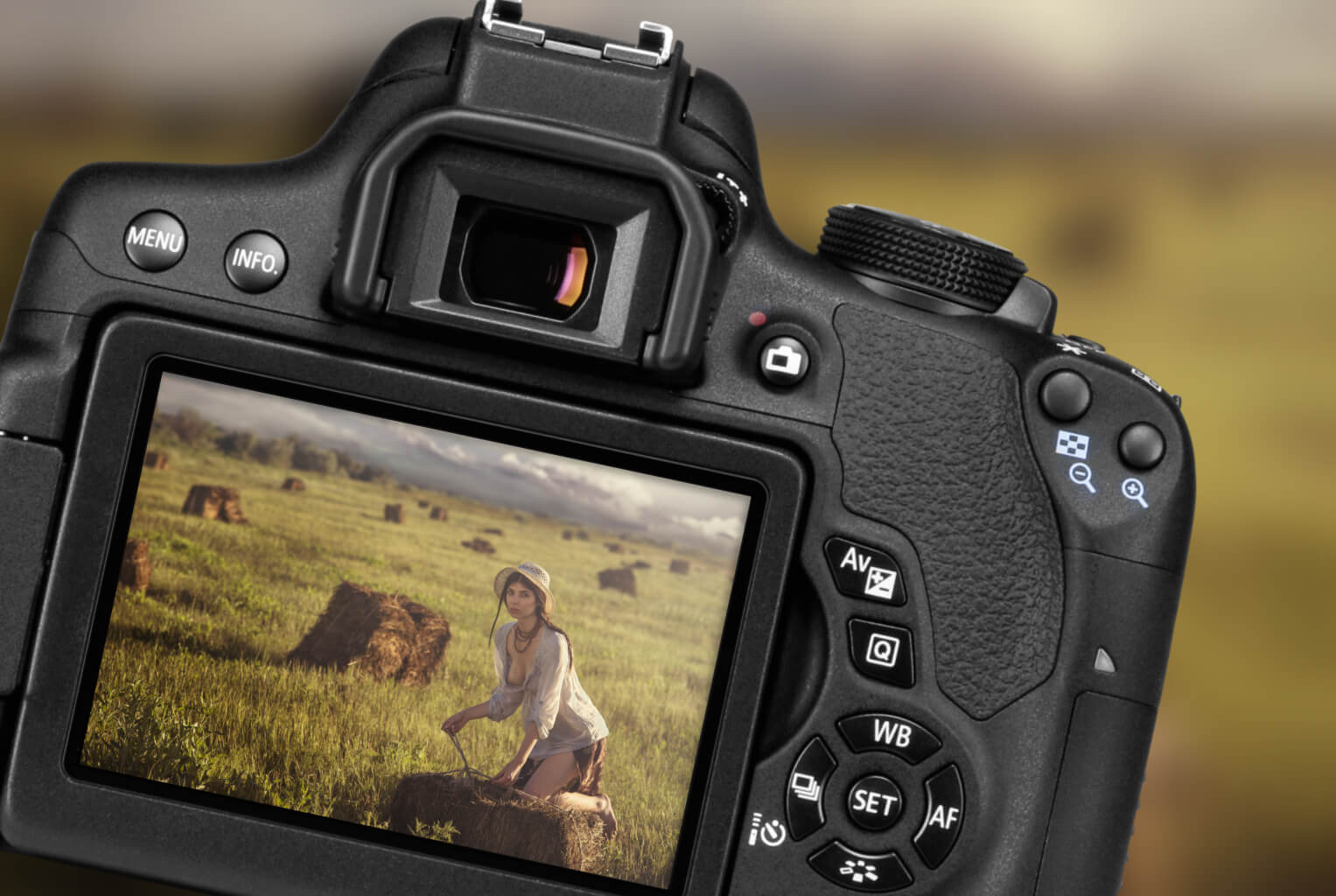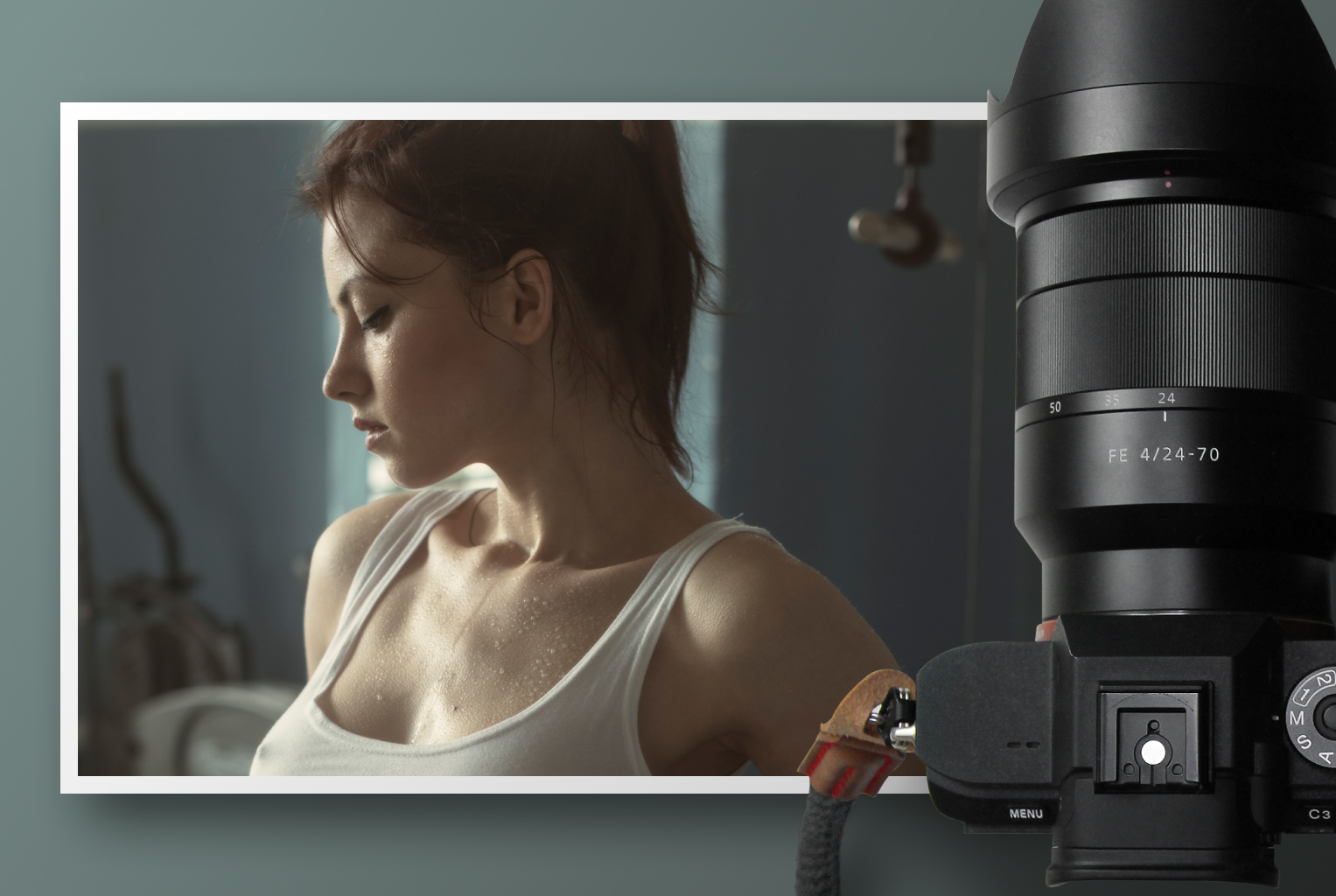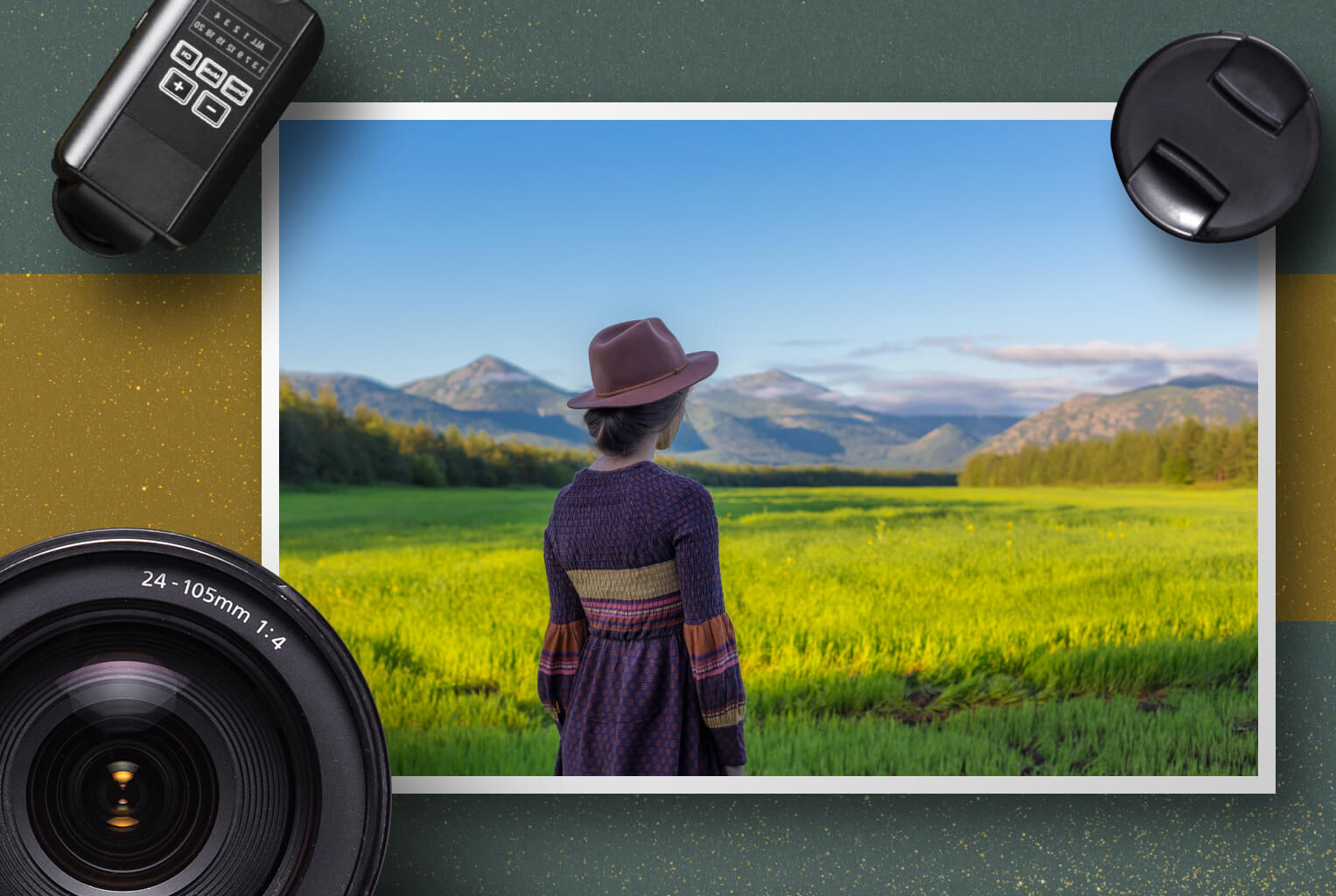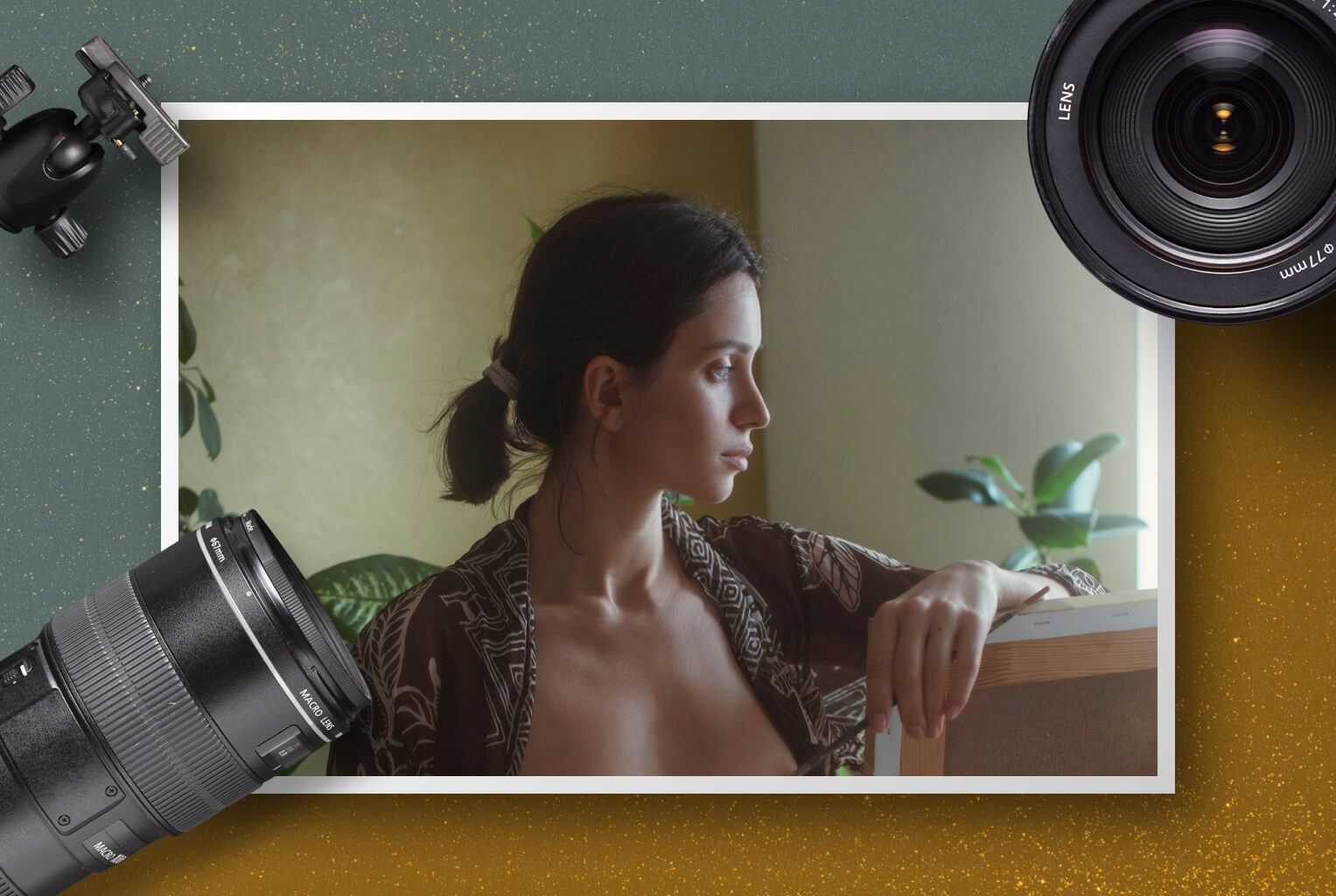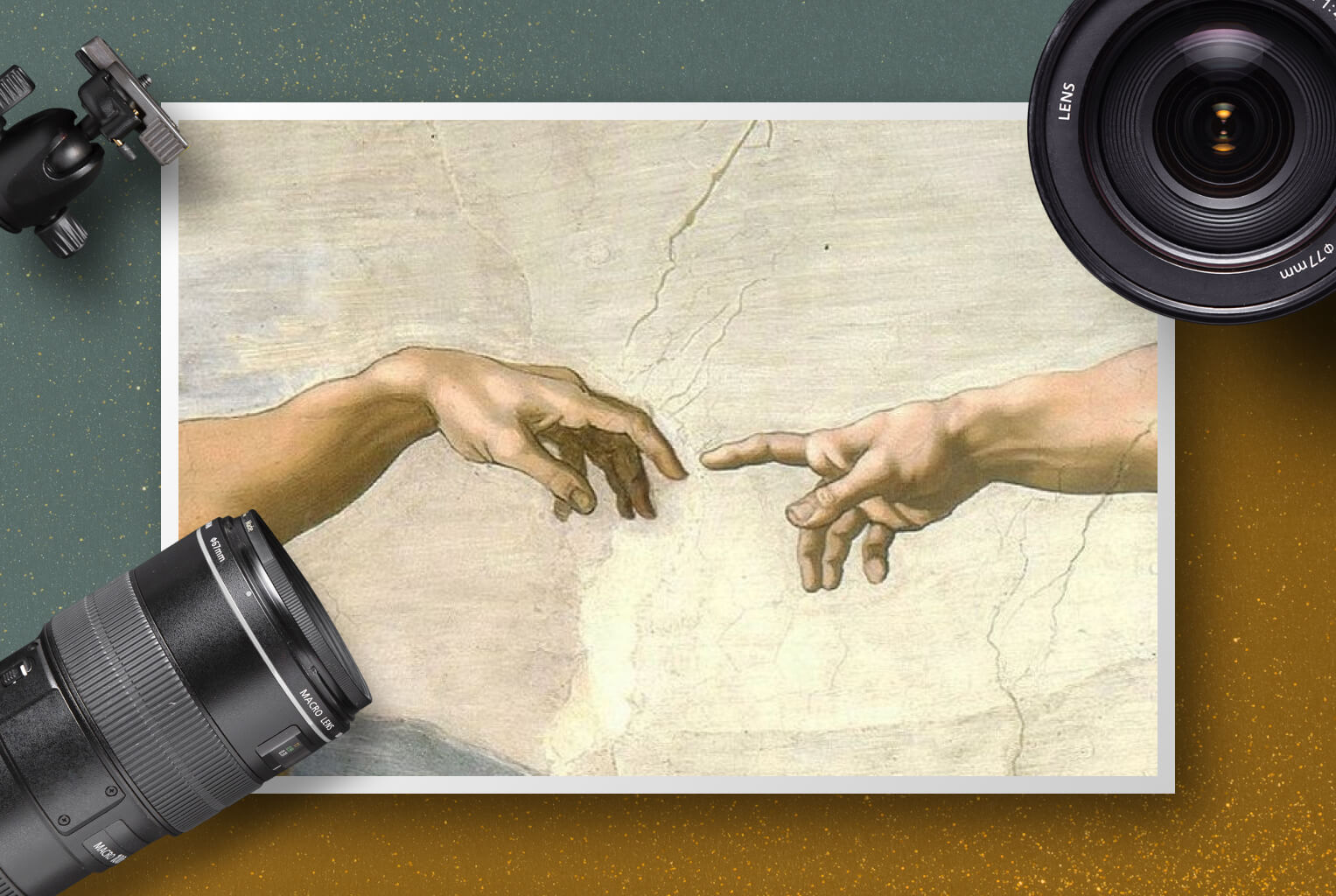
Hands in Portrait PhotographyMãos na fotografia de retratos
In my opinion, taking beautiful pictures of model’s hands in portrait photography is quite a task. Generally speaking, woman’s hands should be graceful and elegant. This is particularly true for wrists and fingers. What’s important here is hands shooting angle, the bending of fingers, and naturalness. Beautifully captured hands produce a feeling of portrait’s completeness focusing attention and creating a harmonious contrast to the woman's curves.
Very often, the best possible way to achieve an appropriate hands position is to adjust them on your own as the model doesn’t see what her hands look like in front of the camera.
To get an idea of the best way to show model’s hands in the photo, I recommend looking through paintings. The Internet contains a huge number of beautiful paintings by various artists. Explore the portraits painted by the artists from various epochs and depicting hands in an absolutely amazing way. Keep paintings you like and use them as references during the photoshoot.
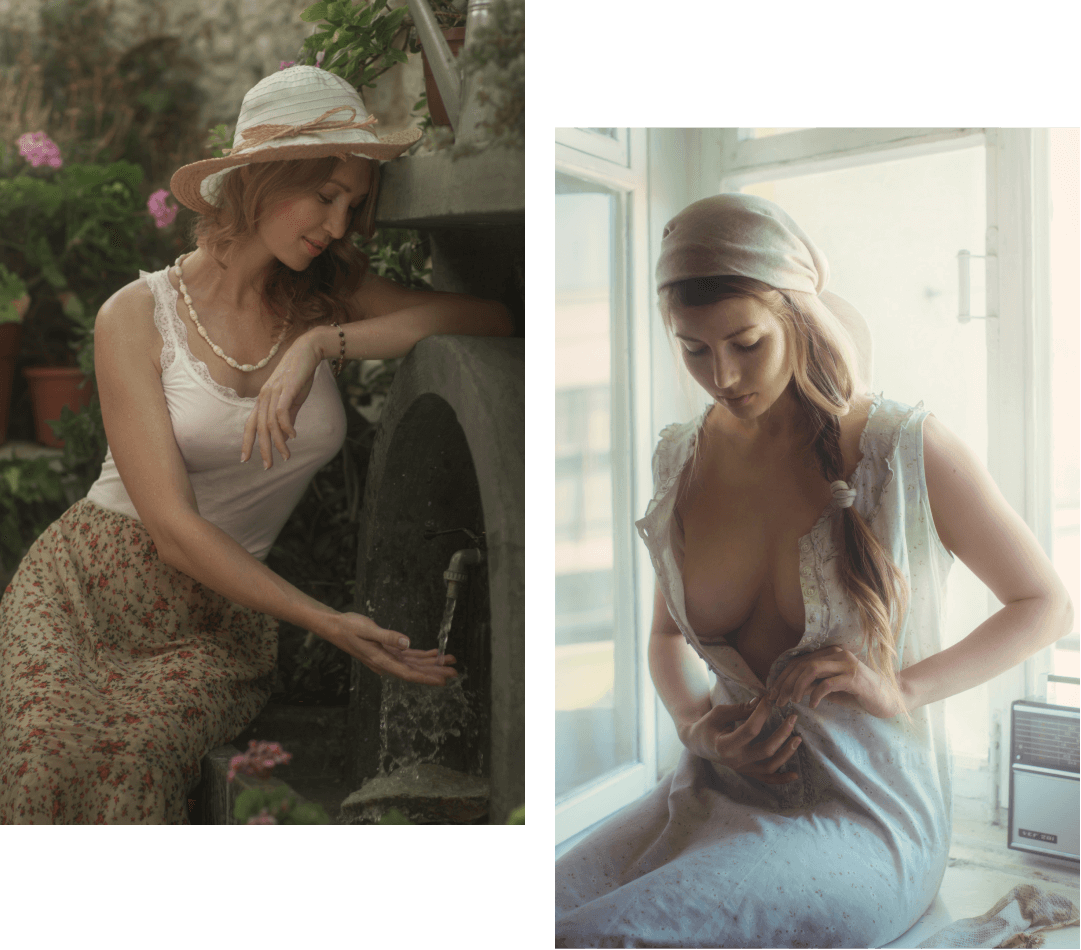
I’m sure that hands look much more harmonious and interesting in the photo when the model is doing something with them. For instance, she can button her blouse, comb her hair, put a flower behind her ear, pick an apple from a tree etc, or simply hold something in her hand. In this case, hands complement the story depicted in the shot and, consequently, make the photo more interesting.
It’s necessary to think how to keep the model’s hands busy while filming in advance. Of course, the fact that you gave her something to hold won’t help you reproduce the beautiful position of her hands. As a photographer, you have to adjust the angle of hand turning, the bending of fingers etc. to make hands look really graceful and beautiful in the photo.
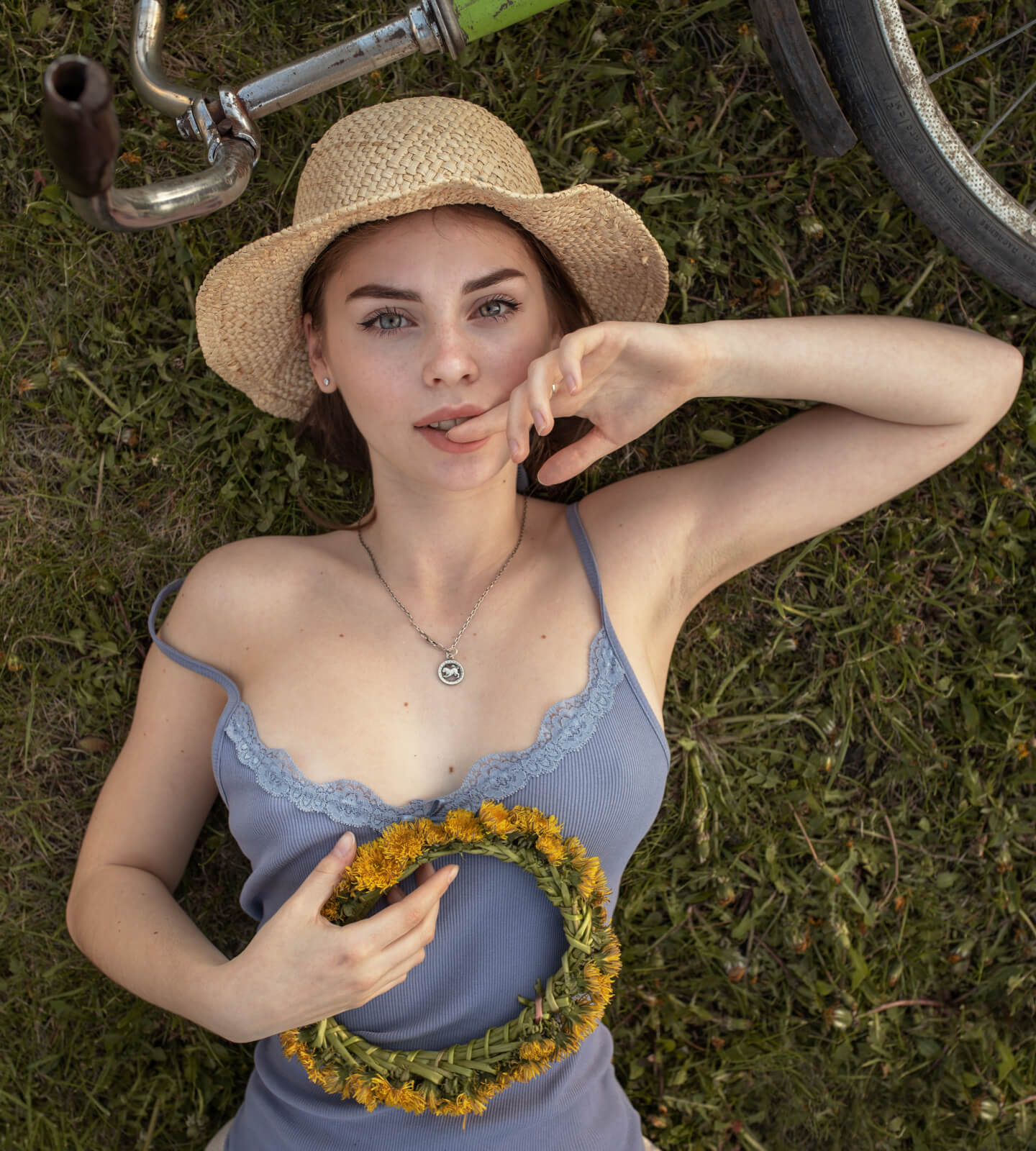
When cropping arms, keep in mind the following rules. Arms cropped up to the elbows or wrists (where they bend) look ugly in the shot. Besides, cropped fingers look ugly, too.
Under certain filming angles, for instance, from the sides, the other hand may be missing from the shot, and the model will look one-handed. Sometimes it may be invisible and tolerable. Yet, in most cases, the other hand should be shown at least partially.
It’s very important which angle is applied to filming wrists and fingers. You have to try to capture them so that the fingers look long and elegant, and the wrist itself looks graceful and delicate. It’s a bad idea to capture fingers that face the camera or the opposite direction. In this case, the fingers look very short or are completely invisible.
Again, let me highlight that painting is the best source of beautiful hand angles.
Na minha opinião, tirar lindas fotos das mãos de uma modelo em retratos é uma tarefa e tanto. De modo geral, as mãos das mulheres devem ser graciosas e elegantes. Isto é particularmente verdadeiro para pulsos e dedos. O que é importante aqui é o ângulo de disparo das mãos, a flexão dos dedos e a naturalidade. Mãos lindamente capturadas produzem uma sensação de completude do retrato, concentrando a atenção e criando um contraste harmonioso com as curvas da mulher.
Muitas vezes, a melhor maneira possível de conseguir uma posição apropriada das mãos é ajustá-las por conta própria, pois a modelo não vê a aparência de suas mãos na frente da câmera.
Para ter uma ideia da melhor forma de mostrar as mãos da modelo na foto, recomendo dar uma olhada nas pinturas. A Internet contém um grande número de belas pinturas de vários artistas. Explore os retratos pintados por artistas de várias épocas e representando mãos de uma forma absolutamente incrível. Guarde as pinturas que você gosta e use-as como referência durante o ensaio fotográfico.

Tenho certeza que as mãos ficam muito mais harmoniosas e interessantes na foto quando a modelo está fazendo algo com elas. Por exemplo, ela pode abotoar a blusa, pentear o cabelo, colocar uma flor atrás da orelha, colher uma maçã de uma árvore, etc., ou simplesmente segurar algo na mão. Nesse caso, as mãos complementam a história retratada na foto e, conseqüentemente, tornam a foto mais interessante.
É preciso pensar com antecedência em como manter as mãos da modelo ocupadas durante as filmagens. É claro que o fato de você ter dado algo para ela segurar não ajudará você a reproduzir a bela posição das mãos dela. Como fotógrafo, você deve ajustar o ângulo de giro da mão, a flexão dos dedos, etc. para fazer com que as mãos pareçam realmente graciosas e bonitas na foto.

Ao cortar braços, tenha em mente as seguintes regras. Os braços cortados até os cotovelos ou pulsos (onde dobram) ficam feios na foto. Além disso, os dedos cortados também ficam feios.
Sob certos ângulos de filmagem, por exemplo, dos lados, a outra mão pode estar faltando na cena e o modelo parecerá ter apenas uma mão. Às vezes pode ser invisível e tolerável. No entanto, na maioria dos casos, o outro lado deve ser mostrado, pelo menos parcialmente.
É muito importante qual ângulo é aplicado para filmar pulsos e dedos. Você tem que tentar capturá-los para que os dedos pareçam longos e elegantes, e o pulso em si pareça gracioso e delicado. É uma má ideia capturar os dedos voltados para a câmera ou na direção oposta. Neste caso, os dedos parecem muito curtos ou completamente invisíveis.
Mais uma vez, deixe-me destacar que a pintura é a melhor fonte de belos ângulos de mão.
Artistas
Informação
Todos os direitos sobre o conteúdo gráfico (fotos, vídeos, ilustrações), enredos/histórias, materiais de texto únicos, arquivos de áudio/conteúdo de áudio, código de programa correspondente, que foram usados e/ou estão sendo usados no aplicativo móvel "NYMF" e/ou todas as suas alterações originais, adições, modificações e também nos serviços https://dubnitskiy.com, https://nymf.com são resultado da criatividade individual e pertencem a D.I. Dubnitskiy (sob o pseudônimo de David Dubnitskiy).
Aviso de Copyright.
